Gentlemen’s Guide: Bangkok’s 5 Best Barber Shops
These top 5 barber shops in Bangkok are where gentlemen can elevate ...
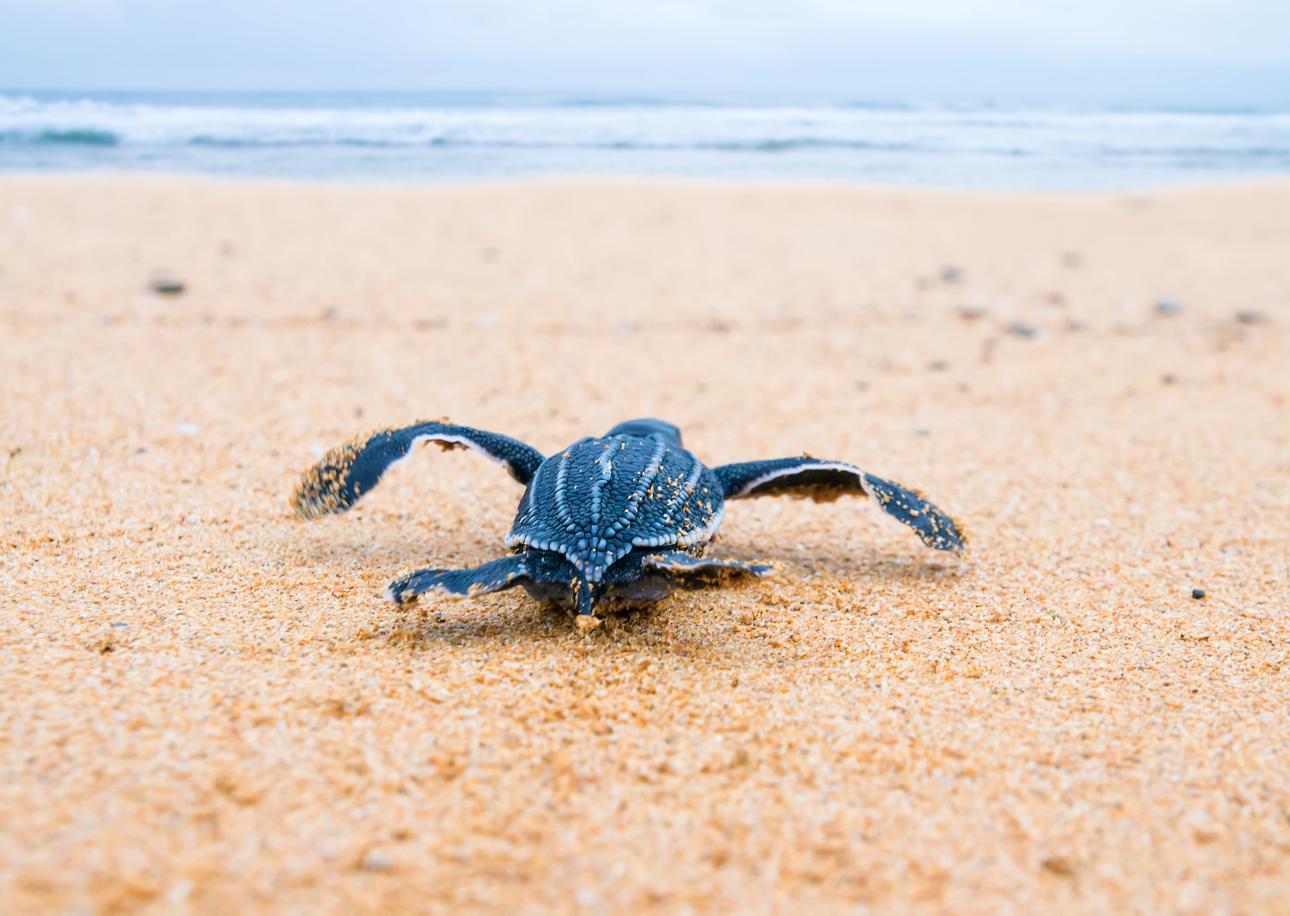
[This story first appeared in Koktail issue 1. Photos courtesy of Sumeth Sukapanpotharam and the Friends of the Ocean Foundation.]
From a patch of sunken sand a tiny snout emerges. The baby leatherback turtle pauses, as if waiting to see if the coast is clear—or perhaps to catch its breath. Only a few days old, it has already dug its way up through over two feet of sand.
It is a warm night on a beach in Phang Nga district in the south of Thailand and the turtle has an eager audience. Huddled around the nest brandishing red-light torches, a group of volunteers supported by the Friends of the Ocean Foundation begin animatedly pointing at the hatchling’s nobbly head. Measuring in at a mere 2-3 inches long, this young leatherback is destined to grow to lengths of up to seven feet, and weigh in at over 2,000 pounds.
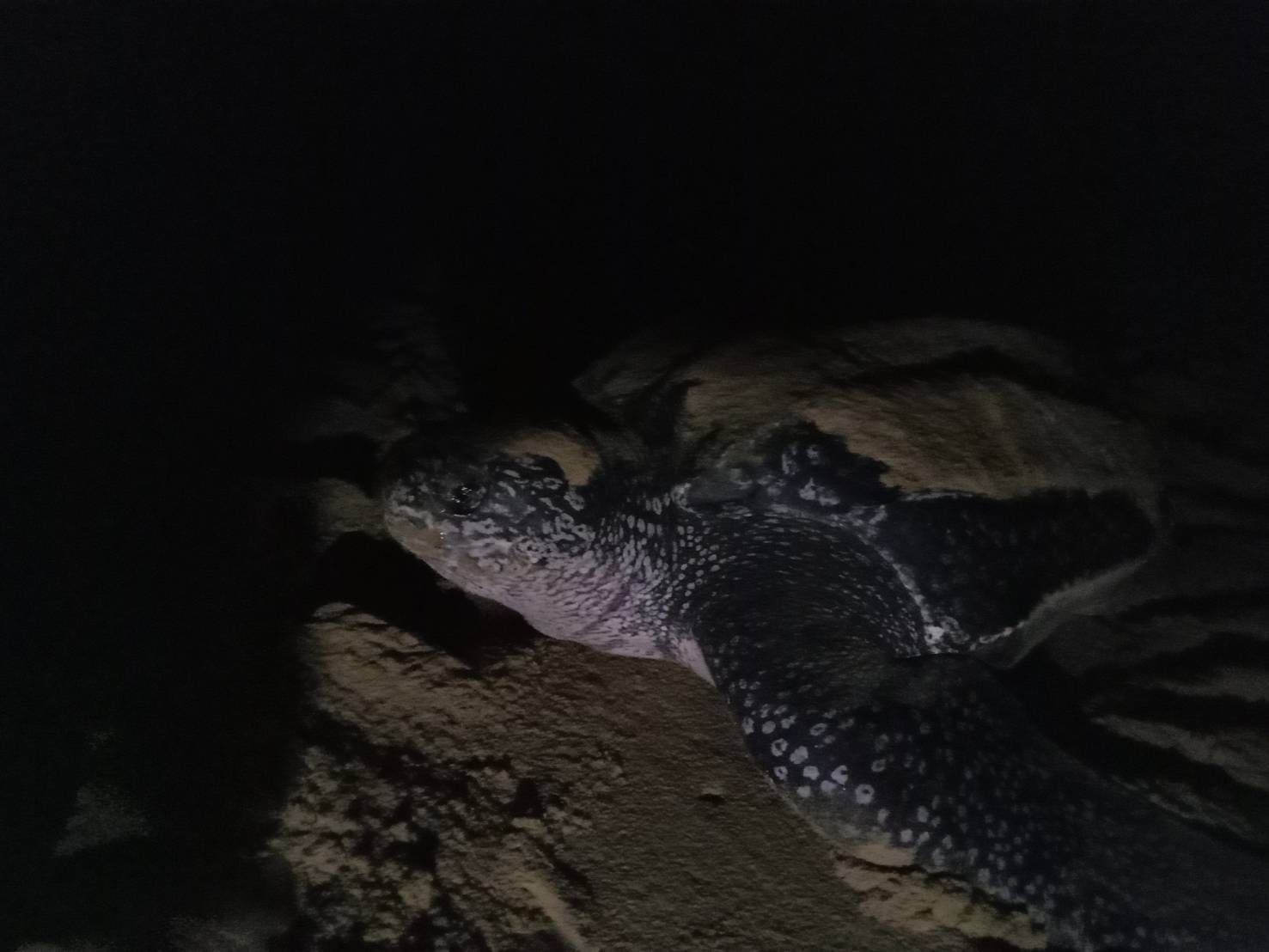
The charity’s founder, Sumeth Sukapanpotharam, is a little bleary-eyed but in good spirits. “In Thai they are also known as tao mafuang—carambola or star fruit turtles. You will see the long ridges on their backs,” he explains. “Keep your eye on this one because everything happens so fast. Once they are out, they are gone in no time. After all our long preparations to protect the nest, they run to the sea in a flash.”
He and his team are witnessing the extraordinary because for over two decades, Thailand’s shores have been largely bereft of turtles. Despite their long ancestry—they are in fact “living fossils”, remaining evolutionarily unchanged for more than 100 million years—as few as 2,300 adult females now remain, making the Pacific leatherback the world’s most endangered marine turtle. On average, only one in every thousand leatherback hatchlings survives to adulthood. And humans are largely to blame.
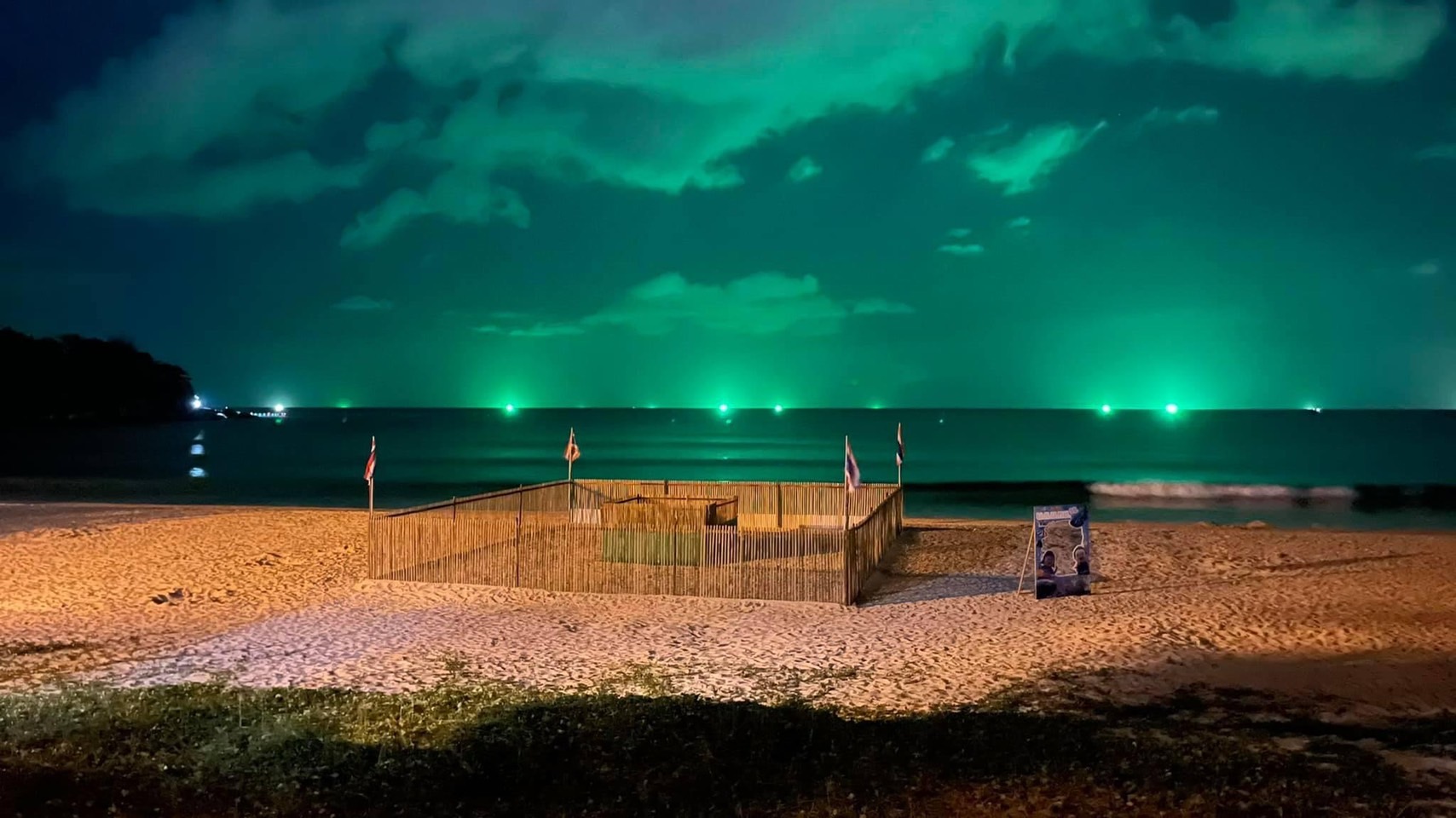
A nesting site is cordoned off to ensure safety for the leatherback turtle hatchings
In 2018, a shocking viral video of a marine biologist removing a 4-inch plastic straw from a sea turtle’s nose helped to sway corporations and consumers alike to stop providing or using plastic straws. In Thailand, the government’s ban on single-use plastic bags at major stores has been an important step in the right direction— but not nearly enough. Dr. Kongkiat Kittiwatanawong of the Phuket Marine Biological Centre estimates that around 30,000 to 40,000 tonnes of plastic waste continues to end up in the country’s oceans each year.
Plastic bags floating in the water look similar to the turtles’ favourite food: jellyfish. Hatchlings and juvenile turtles are more likely to consume plastic waste than adults, which can cause internal injuries, malnutrition and suffocation. Only this year a baby sea turtle was found washed up on a Phuket beach, its tiny stomach lined with 158 pieces of plastic, rubber bands and other manmade trash.
But plastic isn’t the only reason for sea turtle decline. Dr. Kongkiat warns, “To make sure that leatherbacks can nest successfully, we must also minimise threats to turtle safety, such as fishing gear and nets that can lead to entanglement, as well as human activity and recreation on the beaches.”
Turtles have particular breeding habits. Beaches must be connected to deep ocean waters and in Thailand there is only 100km of beach that fits this criteria, stretching between Phang Nga and the island of Phuket. Turtles prefer dark, quiet spots to build their nests but have had to face sharing their beaches with Thailand’s booming tourist industry, disturbed by footfall and noise from hotels and restaurants, as well as increased water activity from boats.
If they survive long enough to hatch, the artificial lights of the beachside bars cause confusion as they rely on the light of the moon to guide them towards the ocean, leading them instead towards traffic, dogs and other hungry predators. Despite the threat of 3-15 years in prison or a fine of 300,000 to 1.5 million baht (approx. US$10,000-$50,000), turtle eggs today are still taken by humans to be sold or consumed.
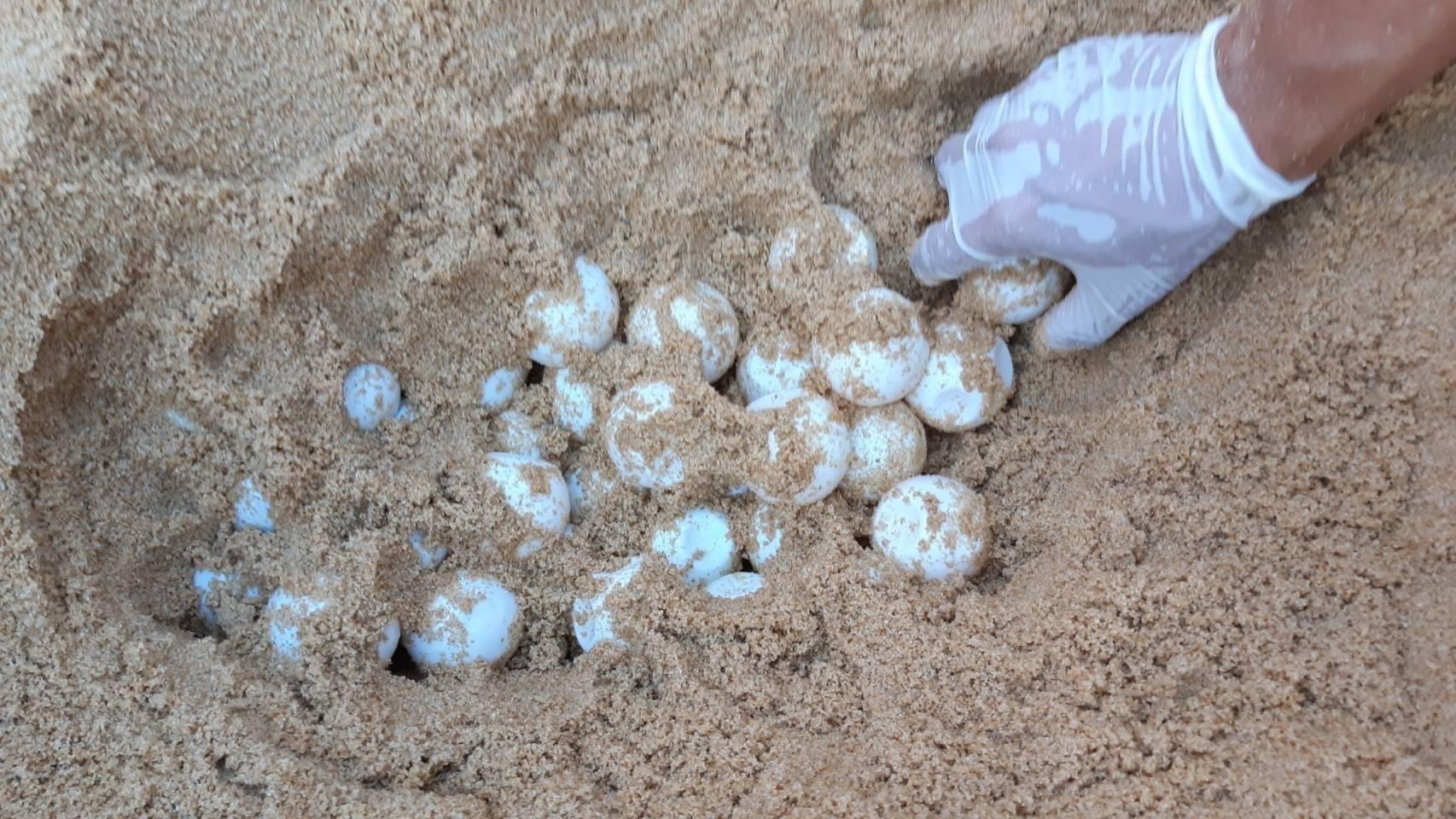
Turtle eggs buried in the sand
To global surprise, in April 2020, reports surfaced that 11 nests had been discovered in Phang Nga. This bumper year for turtle nests broke international headlines. Officials, businesses, conservationists and locals alike rushed to ensure they were protected, yet despite this encouraging news, the return of the turtles also unearthed some underlying difficulties. While there are foundations and NGOs with mandates to support turtles, their work is reliant on regular funding. Differences in priorities and coordination can make their efforts unsustainable in the long term.
“In Thailand, we don’t really have big turtle conservation organisations or marine foundations at the moment,” says Dr. Thon Thamrongnawasawat, deputy dean at Kasetsart University’s Faculty of Fisheries. “We have a few smaller entities but they don’t work consistently. There is no foundation that is still going strong after 30 or 40 years, for example. Instead, they come and go.”
More topical challenges are also on the horizon. The waning of the country’s tourism industry due to the coronavirus pandemic may have led to more turtles coming ashore. However, experts warn of a troubling misperception that nature has “had a break” from humans and is now on the way to recovery. The truth is leatherbacks had begun reappearing on Thai shores in early 2019, long before lockdowns came into effect.
Human damage to the natural world is as prevalent now as it was before—if not more so. Across the world, deforestation, pollution, mining, dam-building and illegal poaching are still on the rise. Critically, the UN also declared pandemics such as coronavirus the result of humanity’s destruction of nature. As economies recover in the pandemic’s wake, this false narrative of a ‘natural respite’ may influence governments to shelve biodiversity protections and environmental issues as a secondary concern.
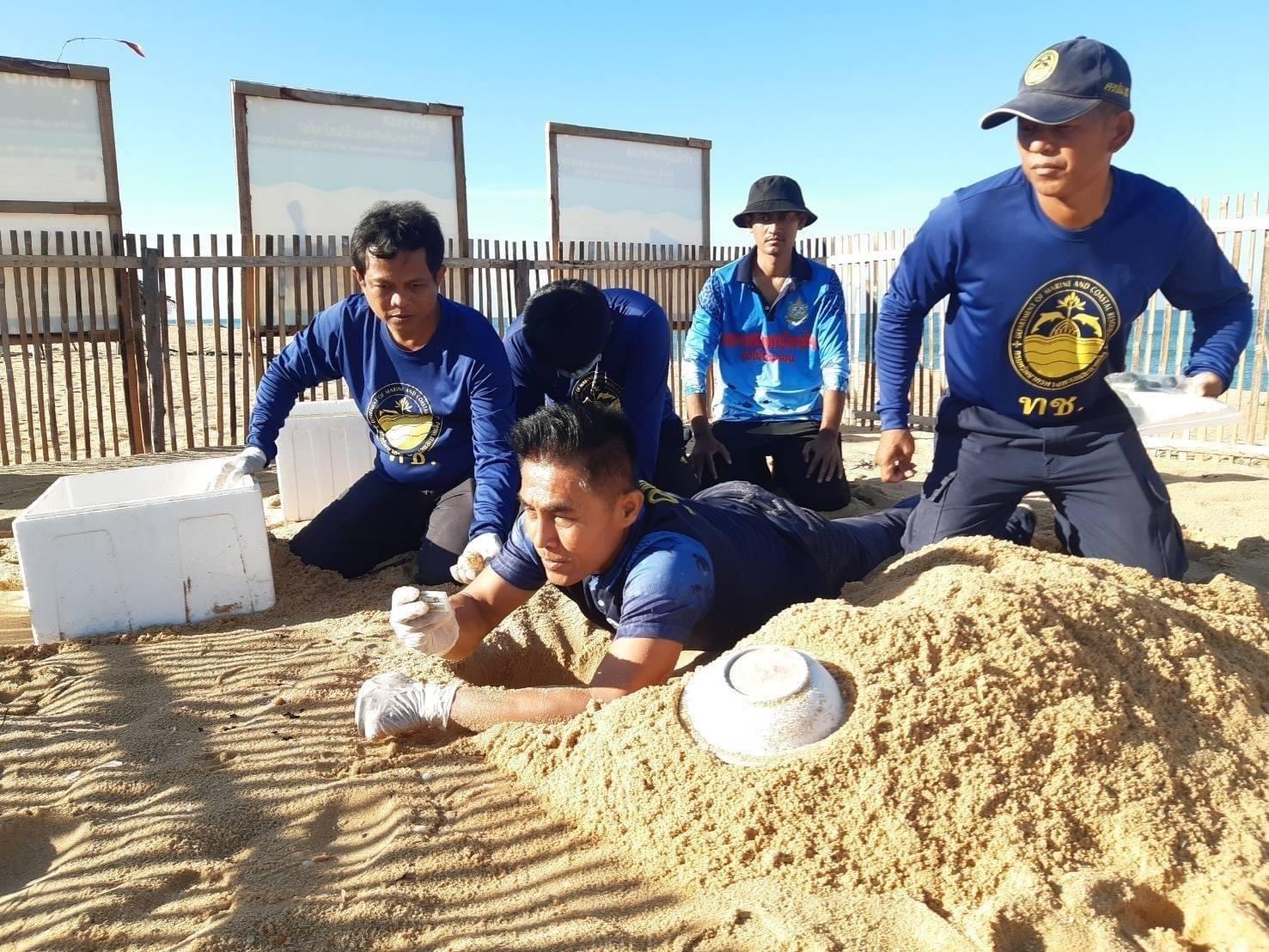
Staff of the Department of Marine and Coastal Resources survey a nesting site
While on a visit to Phang Nga, Sumeth came to learn of these challenges through local conservationists. A property developer and architect by trade, the resurgence of turtles in the area nevertheless struck a chord with him and he leapt to action. “It occurred to me that the turtles’ return was giving the Thai people a second chance,” says Sumeth. “I immediately thought, ‘What can I do?’ Covid was a big wake-up call to many people, including myself, about the importance of preserving nature. I started to help the locals to campaign for that part of the land to be safeguarded so that humans and the animals can better cohabitate.”
Sumeth galvanised the support of the local community to organise volunteer beach patrols and to ensure that nesting sites had adequate support for rangers, including provisions of shelters, toilets and food to help them better monitor the eggs throughout the 60–70-day gestation period. He created a small team to coordinate with coastal towns and asked for help from telecommunications company TOT, who put up webcams and information signposts.
This is a major, albeit unusual, undertaking for an individual. In the last 18 months, Sumeth has contributed significant personal funds towards turtle protection but he feels strongly that the investment is worth it. “We must save the natural world for future generations. I share my efforts with my own children to help them understand how important it is to maintain a sustainable habitat for endangered species or face losing them for good. Just because turtles have returned for now, it does not mean we are absolved,” he says.
His efforts have not gone unnoticed. In October 2020, together with the Governor of Phang Nga, Kokkloy city officials and volunteers, he took part in discussions around solutions for further protecting the turtles and their habitat. This resulted in the signing of a memorandum of understanding, an agreement to work together to “conserve, protect, monitor, surveil and patrol” the area to protect turtle nesting grounds. In order to ensure these objectives are met, Sumeth will continue to contribute funds, equipment and staff.
He and his team have now formalised the Friends of the Ocean Foundation, with the ambitious goal of being the first Thai foundation to provide reliable, long-term support for marine conservation efforts. Beyond supporting local patrols and providing nest-finding incentives, a large part of their plan includes expanding advocacy and outreach efforts in order to build greater public understanding around marine conservation— particularly amongst local school children and fishing communities.
“Focusing on an endangered animal as a champion can make it easier or more relatable for the public to rally behind biodiversity and environmental issues,” says Dr. Thon. “People love to see turtles but whether it is turtles, dugongs or whale sharks, these animals must be the tools through which we promote the bigger picture: the inherent value of the world’s oceans. Public concern is the most important thing for getting policies to change—more important even than scientific work.” He adds, “When we ask the government to protect the beach, or for new regulations, or to change the law, if the local people are behind us it makes everything possible. Communication about these issues with the public, through technology or social media, is key to success.”
Despite upending nearly every aspect of life, the pandemic also provides a sombre opportunity to rethink existing systems that are not working as well as they should be. Since its inception, the Friends of the Ocean Foundation has been determined to spur public support for more progressive policy, lobbying governing bodies to ensure biodiversity issues remain firmly on the table, that the elimination of plastic pollution is prioritised and that nesting sites are protected against new development on public or private land.
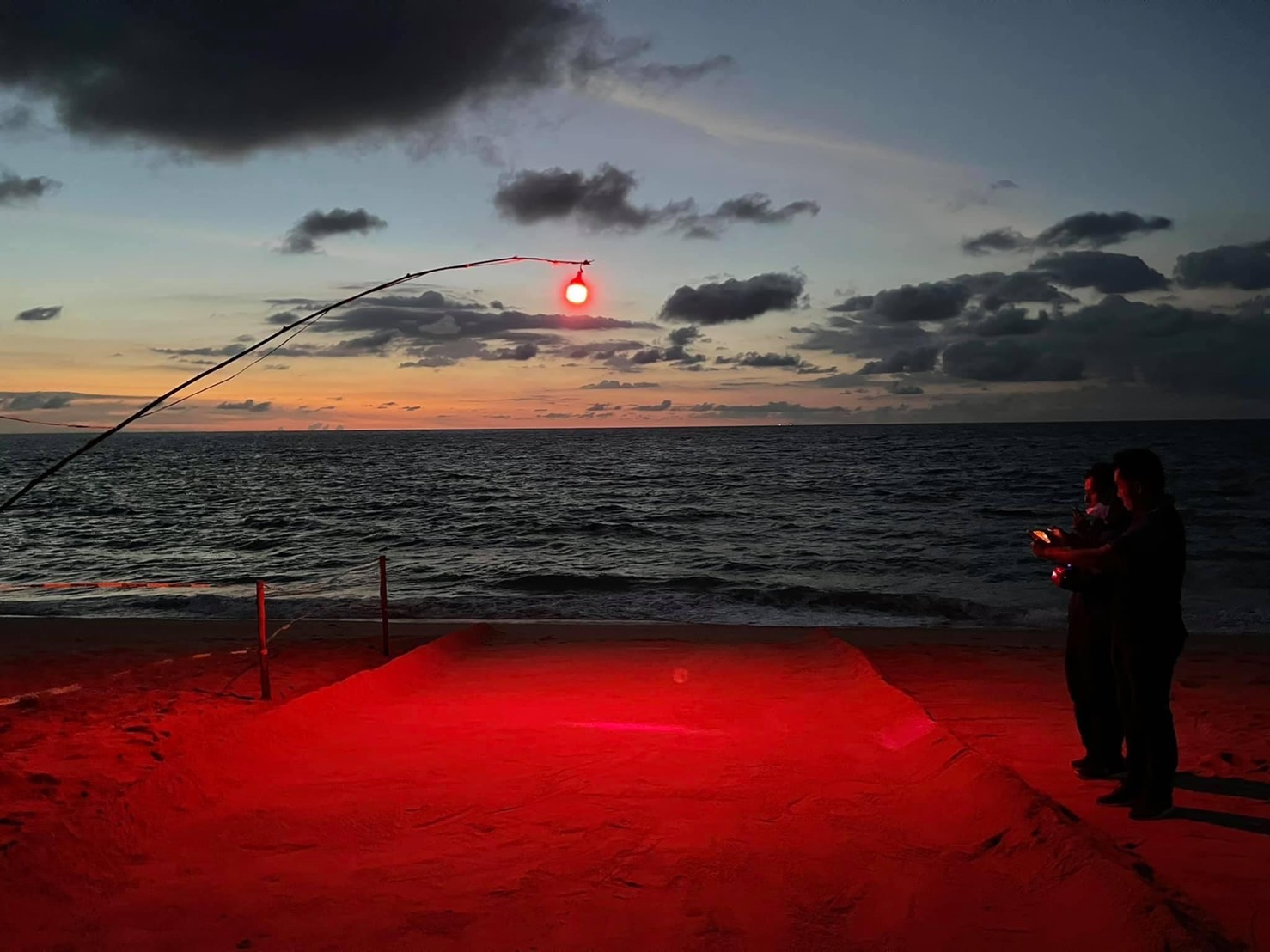
Providing a safe passage out to sea for the hatchlings
Back on the beach in Phang Nga, the baby leatherback chooses its moment. In a sudden motion it breaks free from the safety of the sandy nest and into the open air, striking out for the water. One by one other hatchlings follow its lead by emerging from the nest, scrambling on top of one another, shuffling in quick, clumsy movements across the sand by the light of the moon towards the lapping ocean.
“You know what’s amazing?” Sumeth says, watching keenly. “After maybe 20 years the turtles come back to the very same beaches where they hatched—without Google Maps! Somehow, they remember the exact spot and scientists just can’t work out how they do it. So it’s only goodbye for now. If we are able to make the changes necessary to help them survive, I hope, we will see them again one day.”
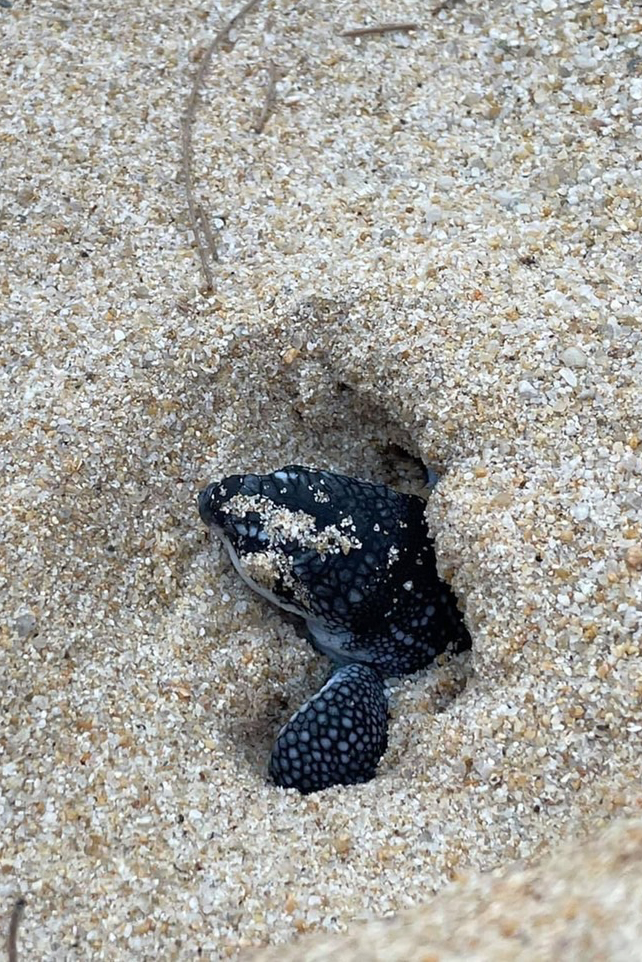
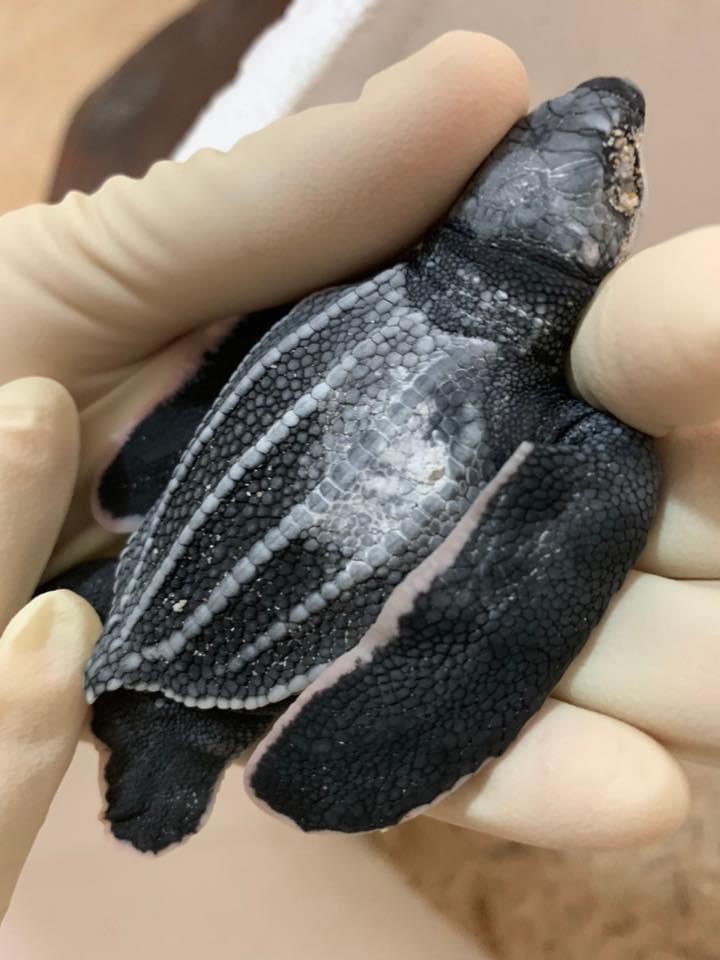
These top 5 barber shops in Bangkok are where gentlemen can elevate ...
Wandering around the globe, try out the signature tastes of cultures across ...
We asked Thai actresses and got real stars, fictional heroes and everything ...
Pets, as cherished members of our families, deserve rights and protections that ...
Sailorr and Molly Santana’s black grills fuse hip-hop swagger with homage to ...
VERY THAI: In this regular column, author Philip Cornwel-Smith explores popular culture and topics ...
Wee use cookies to deliver your best experience on our website. By using our website, you consent to our cookies in accordance with our cookies policy and privacy policy